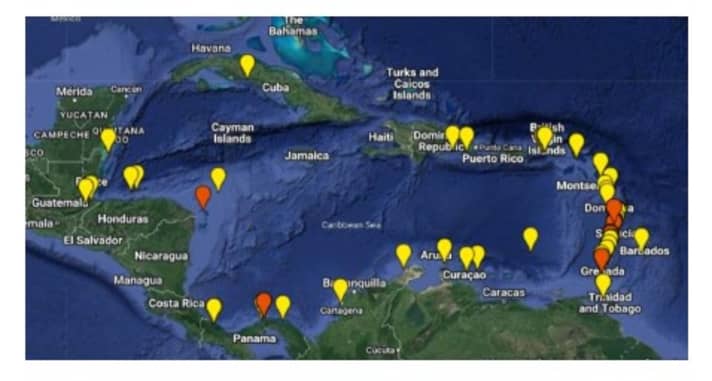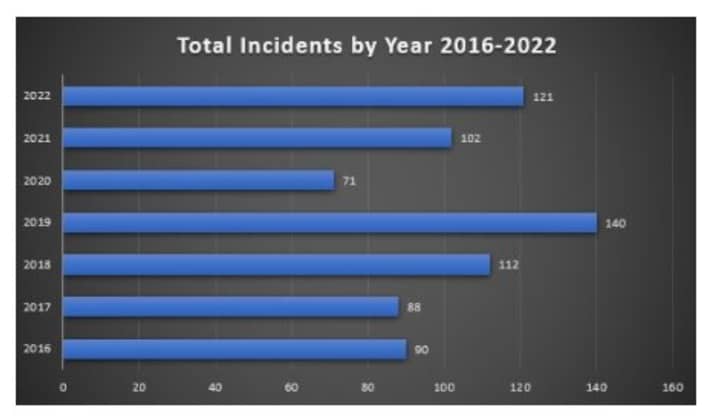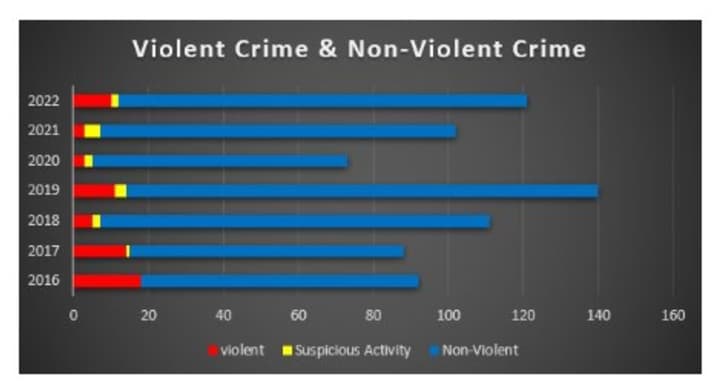
The most recently published CSSN annual report contains details and analyses of reported crimes against crews and yachts in the Caribbean in 2022. The total number of recorded crimes has increased significantly compared to 2021 and is now similar to the level before the coronavirus pandemic. There has been a significant increase in violent crime, with assaults and robberies taking centre stage. Cases of piracy have decreased.

The total number of reported offences in 2022 rose from 102 to 121, an increase of 19%. Violent incidents, in particular assaults/robberies, rose significantly from 7 to 12 (+72%). In terms of numbers, this is offset by a decrease in reported and suspected cases of piracy from 5 to 3 (- 40 %). The violent activities in the Caribbean were concentrated in St Lucia, while the incidents overall were widely dispersed. St Vincent and the Grenadines again took the top position (26 reports, 1 act of violence), followed by Martinique (17 reports, 1 act of violence), Panama (10 reports, 1 act of violence), St Lucia (10 reports, 5 acts of violence), the Dutch Sint Maarten (8 reports, no acts of violence) and the French St Martin (7 reports, no acts of violence).

Main target for thieves: dinghies and outboard motors
The overall increase in reported incidents is unsurprising, according to CSSN, as water sports activities in general have returned to a more typical level. Dinghies and outboards are still the main target for thieves. Crews have improved security measures for their dinghies, but overnight lifting and robust locking systems are not always enough to protect them. The perpetrators adapt to the improved security measures and have the appropriate tools with them. However, many dinghies are still only poorly secured with simple padlocks and cables, which encourages opportunist theft. Video surveillance on dinghy docks is still uncommon in the Caribbean. Video surveillance and GPS trackers installed on cruising yachts have caught some offenders in the act, but the law enforcement authorities show no willingness to use them in investigations.

Summary
In 2022, most robberies, robberies and thefts were recorded in St Lucia and St Vincent and the Grenadines, followed by Martinique, St Martin and Panama. Due to the poverty of large sections of the population, theft is a serious problem that all sailors should be aware of. Opportunity makes thieves! Fortunately, violent crimes against crews are extremely rare in the Caribbean.
Mandatory protective measures
Crews departing from Martinique and heading south to the Grenadines should always check the current status with the base managers of the charter companies. It also makes sense to take a look at the Caribbean Safety and Security Net (www.safetyandsecuritynet.org), as all incidents in the area are collected here and described in detail on the website. In addition, the companionway hatch and large windows should remain closed at night and the dinghy and outboard motor should be hauled up at night and connected as securely as possible. However, the latter is recommended throughout the Caribbean.
